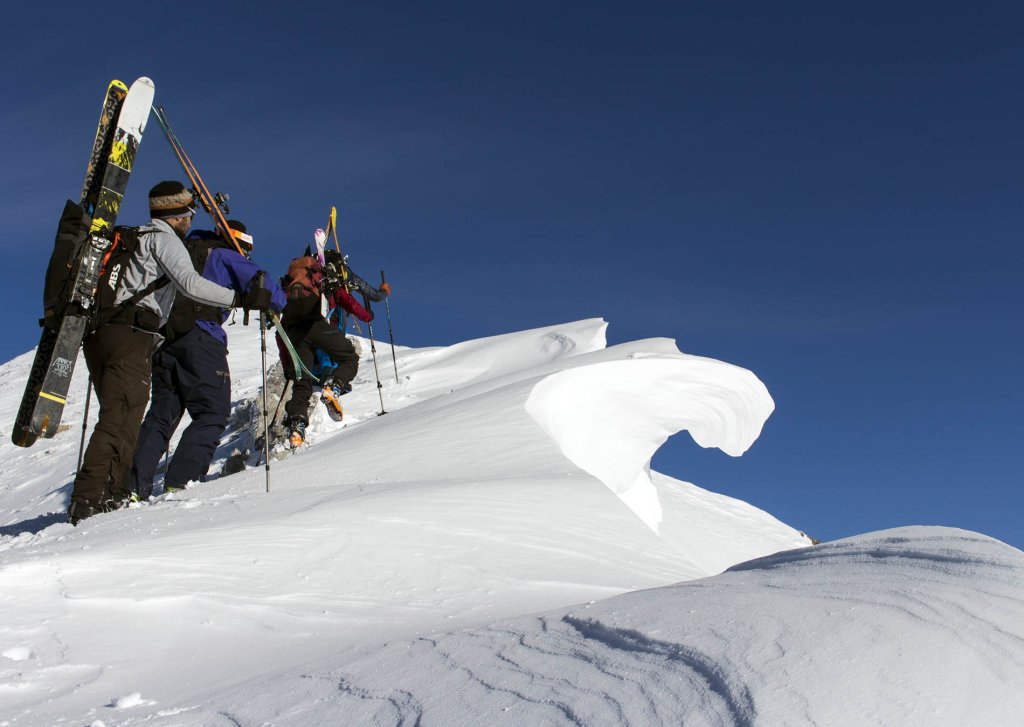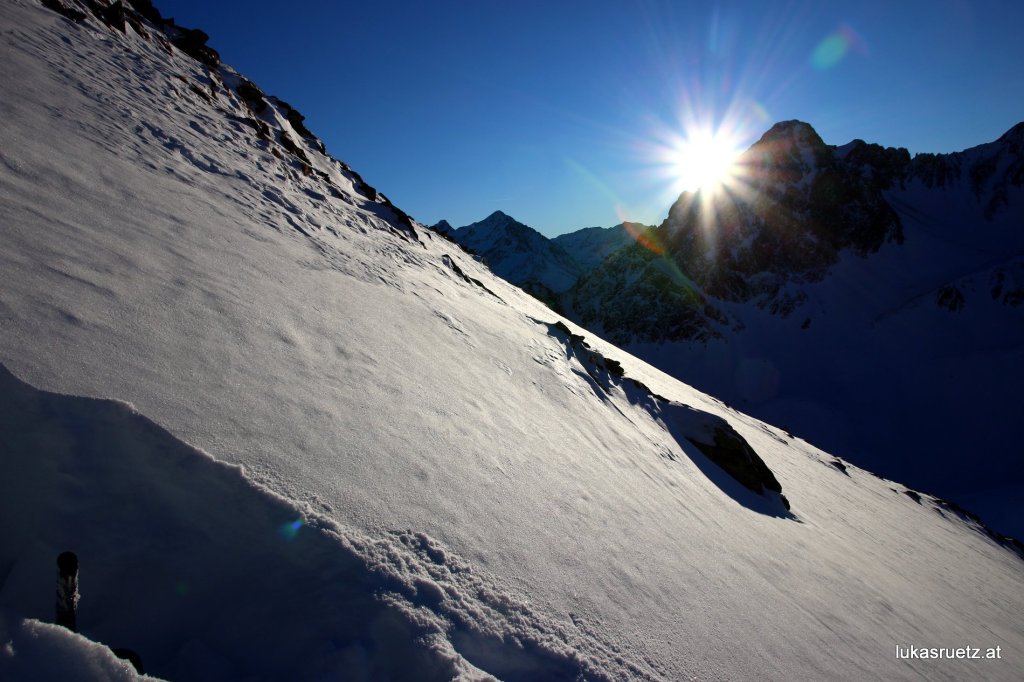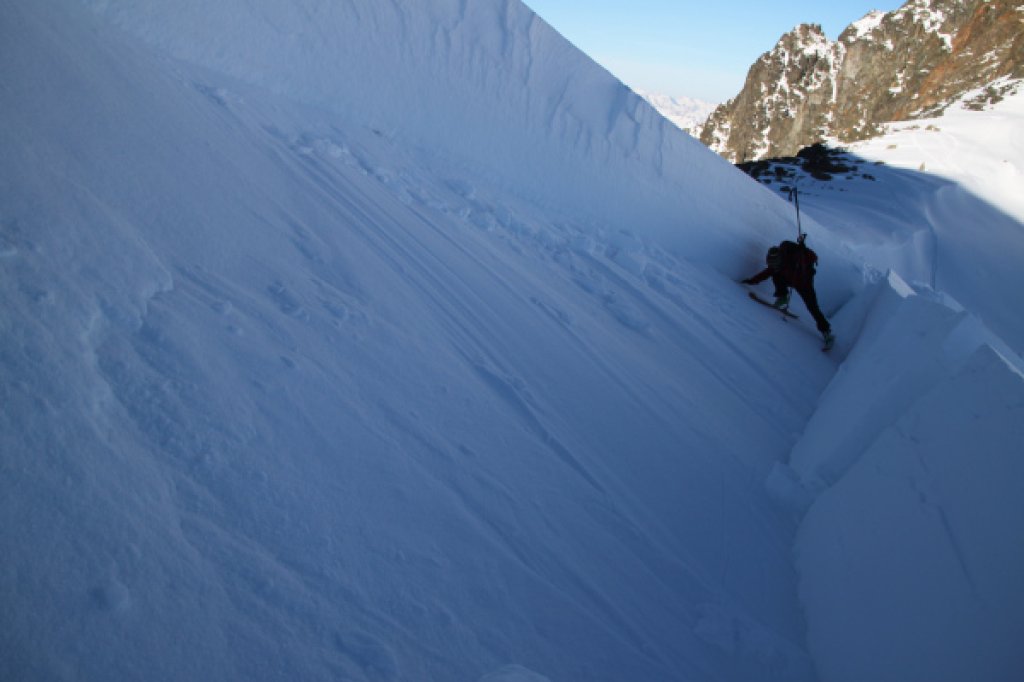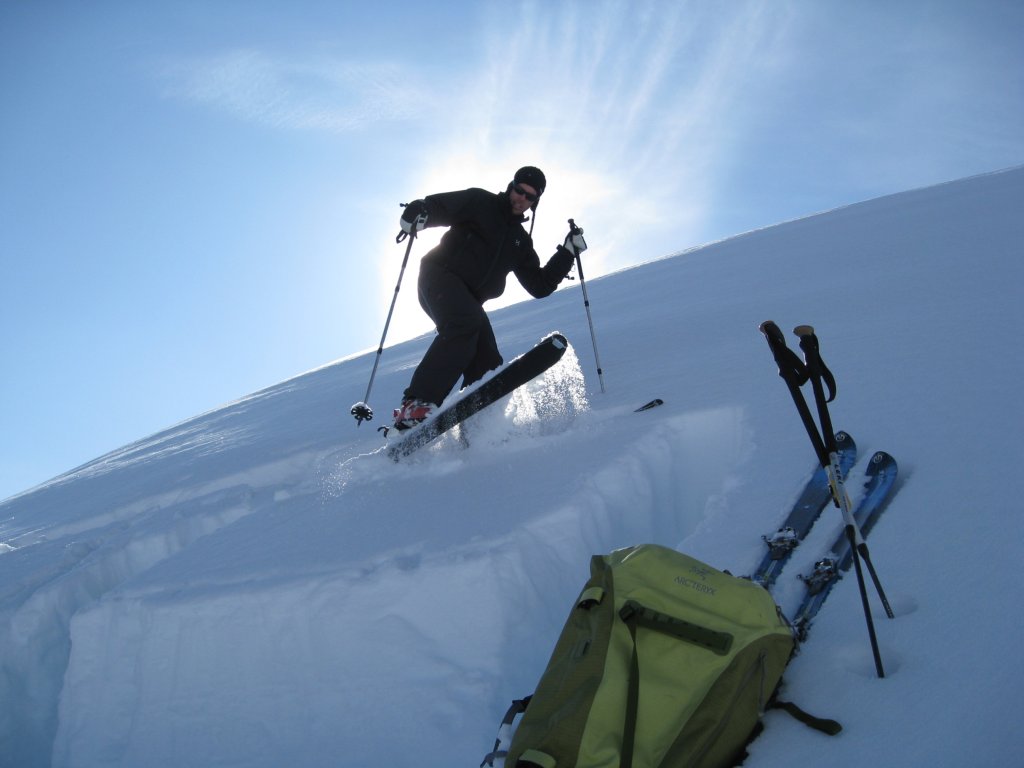The common language as a basic requirement for avalanche warning
Unlike in Austria, for example, the avalanche situation report for the whole of Switzerland is compiled centrally in Davos. The avalanche forecasters in Davos can get an approximate overview of the situation based on weather station data, but the assessments and feedback from the human observer network that the SLF maintains throughout Switzerland are at least as important as the automatic measurements.
There are different types of SLF observers who generate different data: the flat field observers measure fresh snow and snow depth on a daily basis, make various observations to assess the avalanche risk and regularly dig profiles in staked-out measuring fields in the plain. The main aim here is to continue valuable, long measurement time series. In addition, in extreme situations, when it is not possible to carry out snowpack surveys elsewhere, the flat field profiles can still be used.
Selected mountain guides report their observations from the field via a specially developed app, which they can use to communicate their assessments to the SLF and exchange information with each other. In addition to general observations, for example on danger signs or weather developments, the observers record layer profiles, carry out stability tests and submit a risk assessment. Ski resort employees and avalanche services also report observations and hazard assessments from their regions.
When it comes to hazard assessments in particular, it is not so easy to express exactly what you want to say on the one hand and to interpret other people's statements correctly on the other. What level would I give today? Why? And, does my assessment agree with the bulletin? If observer A reports, "today it is dangerous", he may mean something completely different from observer B.
In a study by SLF researchers Frank Techel and Jürg Schweizer, these differences were analyzed in more detail: the evaluation of 10,000 local hazard level assessments by SLF observers shows that the observers disagree with each other in 22% of cases, even at close spatial distance. In 76% of cases, the local hazard level assessments of the observers agree with those of the bulletin, although there are clear differences between individual observers - some consistently rate the hazard higher or lower than others. There are also certain differences between different groups of observers. For example, flat field observers and ski resort employees tend to rate the danger higher than observers who are themselves out and about in the open ski area (mountain guides, SLF employees).
In order to counteract such differences, the participants of the SLF training course "Observing and assessing", all of them observers for the SLF, now stand in the seminar room with their index cards.
Some go purposefully to their seats, others hesitate, consult, compare the cards and then join one of the groups. In the end, there are significantly more people on the left-hand side of the room, at the lower danger levels. Only a few feel they belong to levels 4 and 5.
Course leader Lukas Duerr goes through the cards one by one until the groups have arranged themselves correctly and there are 5 people at each hazard level. The general conclusion from the exercise is: "Not all that clear, but logical at second glance."
The exercise makes it clear how important a uniform understanding of the hazard level definitions is and underlines Duerr's request to always justify hazard assessments in as much detail as possible and to find a uniform language for this. Today it is dangerous" becomes "today it is more dangerous than yesterday because fresh drift snow has formed. The following alarm signs could be seen..." Those who issue hazard assessments, including the hazard level, might think more carefully in future about the difference between "typical" and "frequent", or between "avalanches are possible" and "avalanches are to be expected".
Skier foursome vs. traffic foursome
The next item on the agenda shows that the understanding of danger levels can also change over time. Duerr presents a map of the Alpine region, showing how often the major danger level is used in the various countries and warning regions. Switzerland appears to be a kind of island. Major is assigned relatively often in France in particular, but most other Alpine countries also use level 4 noticeably more frequently than Switzerland.
These differences cannot be explained by differences in the snow cover alone, but are due to the different perceptions of the meaning of the level. The use of danger level 4 will certainly also occupy the EAWS (European Avalanche Warning Services) group in the near future.








